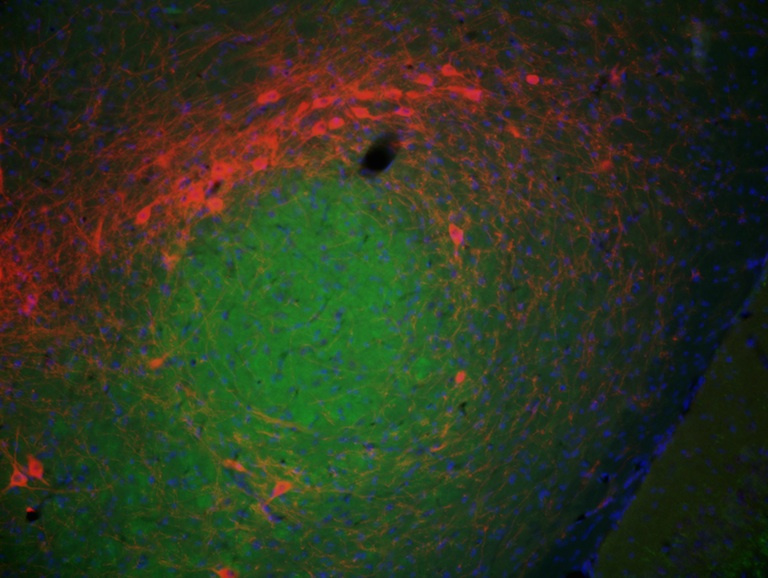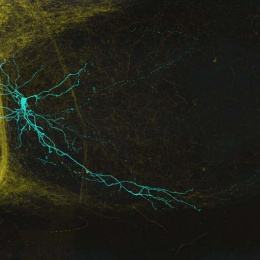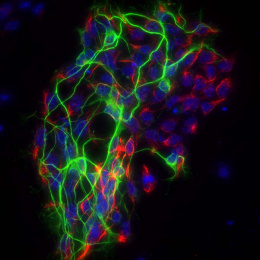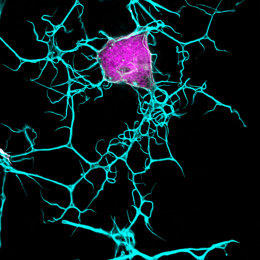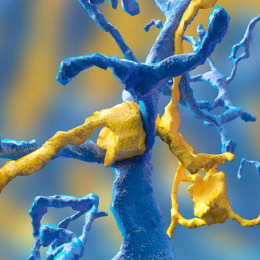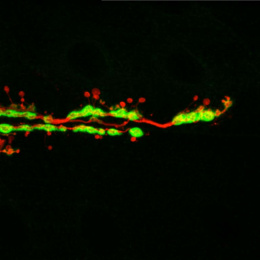Investigating the Neuroscience of Parkinson's Disease 1
Investigating the Neuroscience of Parkinson's Disease 1
Submitted by Jill Crittenden, Michael Riad & Jannifer Lee
McGovern Institute for Brain Research, MIT Department of Brain and Cognitive Sciences, MIT Department of Biology, Koch Institute at MIT
Red fluorescence labels the dopamine transporter in neurons of the substantia nigra of a mouse brain. The substantia nigra is severely degenerated in Parkinson’s disease and normally produces dopamine, which is important for the control of movement, mood and motivation.
In this image, it is apparent that some of the dopamine-producing neurons (red) are more deeply entwined in the axon terminals that are labeled in green, suggesting that they may be controlled differently from the dopamine-producing neurons at the top of the image. We are testing whether disrupting genes in the neurons with axons labeled in green affects behavior
